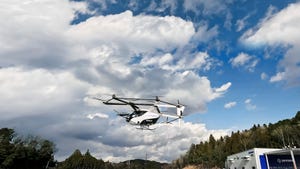Waymo Shows New Generation of Self-Driving TechnologyWaymo Shows New Generation of Self-Driving Technology
Generation 6 of the Waymo Driver technology promises better performance and reduced costs

Waymo has officially introduced the latest generation of its self-driving technology, which will feature in its all-new electric robotaxi, developed in tandem with Chinese automaker Geely.
Generation six of the Waymo Driver technology promises to bring superior performance in the form of improved resolution, range and compute power along with reduced costs.
The taxi has been heavily tested over several years, first appearing at an event in Los Angeles in 2022. It is based on Geely’s SEA-M platform, also used by the automaker’s Zeekr MIX, a stylish Chinese-market multi-purpose vehicle (MPV) with obvious similarities to the new Waymo cab.
According to Satish Jeyachandran, Waymo’s vice president of engineering, the new Waymo Driver is “optimized for costs, designed to handle more weather and coming to riders faster than before.”
Key to the sixth-generation Waymo Driver’s functionality is a new sensor suite comprising 13 cameras, four lidar sensors and six radars, as well as an array of external audio receivers.
This constitutes a reduction in cameras (from 29) and lidar (from five), which helps to cut the cost of production, but delivers improved functionality, with Waymo flagging its overlapping fields of view around the vehicle of up to 550 yards in different weather conditions.
The benefits to performance are explained by advances in sensor technologies as well as more strategic positioning on the vehicle, plus a unique approach for different operating environments, such as adjusting sensor cleaning for vehicles in colder climates.
The latter process has been helped by insights delivered via Waymo’s continued rollout in various cities and dedicated testing programs in parts of the U.S. with wildly contrasting climates, which has seen the company’s AVs cope with extreme heat, fog, rain and hail.
“Since our vehicles are exposed to the elements for long periods without manual intervention, we implemented preventive measures for each sensor to maintain a clear view of its surroundings, whether it’s driving through a buggy Texas road or operating in freezing temperatures,” said Jeyachandran.
The new AV marks a significant departure from the existing converted Jaguar I-Pace SUVs used by Waymo, although it occupies a similar footprint. It is much boxier in terms of its appearance and offers more headroom and legroom inside, with a low step for easy access
Waymo has not yet revealed when the new AV will go into active service, but initially it is expected to be used alongside the company’s I-Pace models rather than replace them.
The sixth-generation technology is being rigorously tested, having already undergone thousands of miles of real-world driving experience and millions more in simulation.
Jeyachandran concluded: “Our system’s performance in simulation shows promising indications that we are on track to begin operating without a human behind the wheel in about half the time [of the previous generation],” said Jeyachandran.
The news comes at a busy time for the company, as it continues to expand its coverage in Califorinia, as well as carry out driverless rides on San Francisco freeways for the first time. Waymo recently secured a further $5 billion investment from parent company Alphabet.
About the Author
You May Also Like







